Artist Karen Bognar Khan explores the nature of form and composition in her portfolio of still life paintings. See more of her intriguing work by visiting her website.
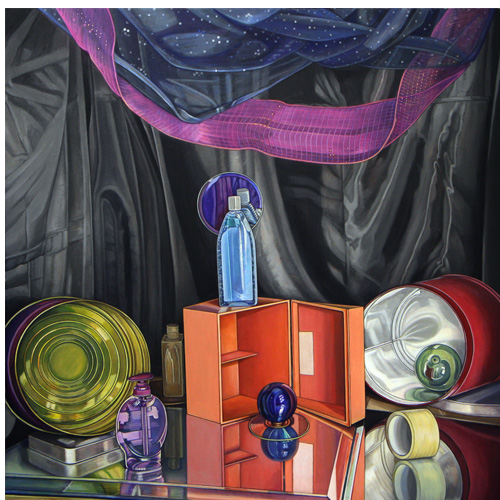
“Night Vigil” acrylic, 36” x 36”
My transition to the “Reflection” series of still life paintings began in 2016.
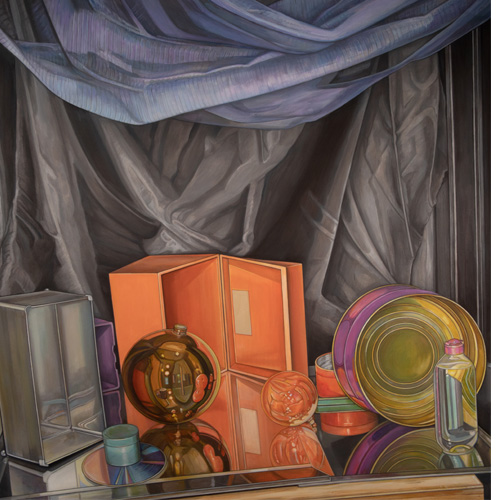
“Night Vigil Two” acrylic, 36” x 36”
I was unexpectedly visited by a former employee of Sotheby’s whose enthusiasm for my paintings prompted me to dive deeper into my unique expression as an artist. I decided to focus on creating new parameters for the genre of realistic still life.
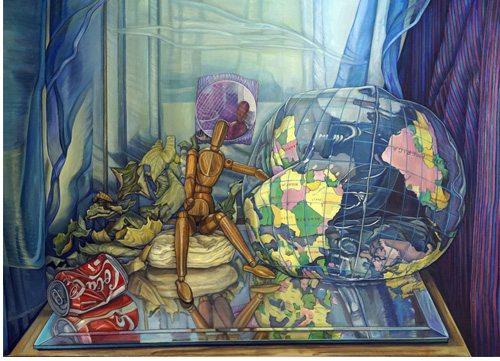
“Imminent” acrylic, 26″ x 36″
I began to abstractly think about arranging interesting visual compositions while leaving behind expected arrangements and prejudices about objects. (For example, if I painted a crushed Coke can, I only intended for it to be viewed as a nameless element of the whole set up. Hanging Christmas balls are orb-like reflective pure forms, and not about holidays).
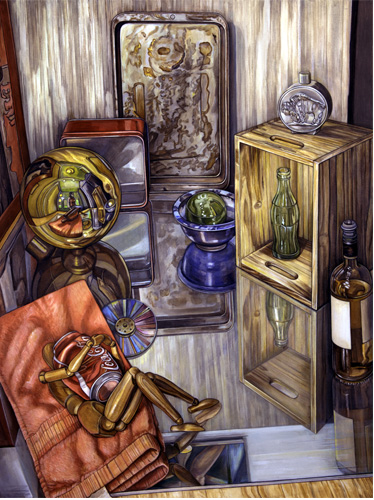
“Self Portrait” acrylic, 30″ x 46″
Still life set ups can be composed of both geometric and biomorphic elements. It is exciting to mingle any object without constraint. I trust my intuition when arranging objects. I anticipate painting these new worlds that I get to create.
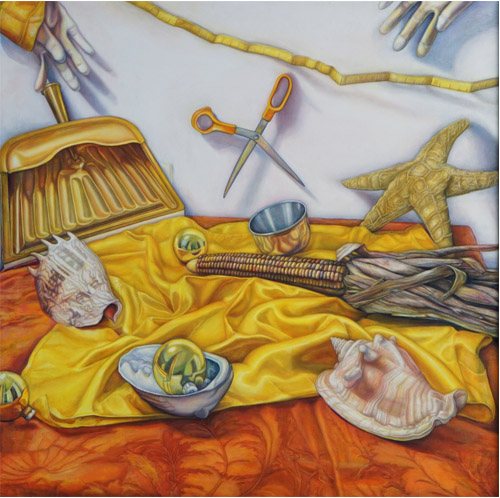
“End of the Year Clean Up” oil, 36″ x 36″
Sometimes I suspend objects, defying gravity.
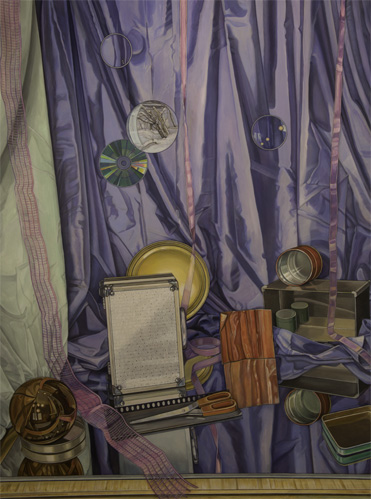
“Reflections” acrylic, 36″ x 48″
Reflections on metallic and glass and other surfaces are energizing. Adding mirrors helps break up space and allows the viewer to think beyond the three dimensions of the time-space continuum. How do I convey this intention effectively? This consideration continues to challenge me.
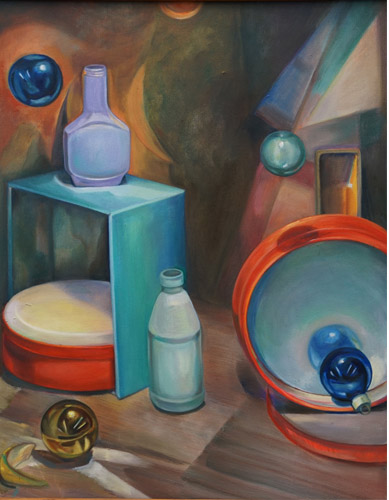
“Anti Gravity” oil, 24″ x 30″
Painting detailed realism breathes life into the painting. It is like birthing a new world. Detail allows the beauty of form to surface.
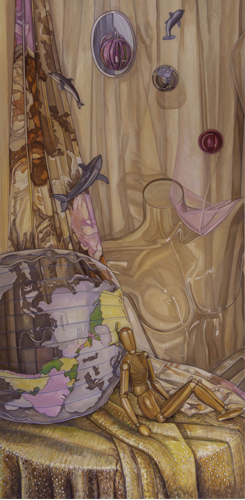
“Meditative Flow” acrylic, 24″ x 48″
Spending time seeing into objects is thrilling and like a meditation. Objects in themselves can look more abstract when painted in a lot of detail.
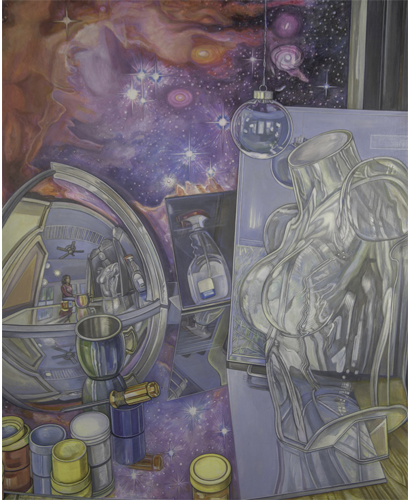
“Magellianic Cloud” acrylic, 28” x 34”
Paintings complete themselves and gel at a certain level of finish. Everything is really energy. This quantum concept makes our ability to perceive realistic forms rare and special to me.
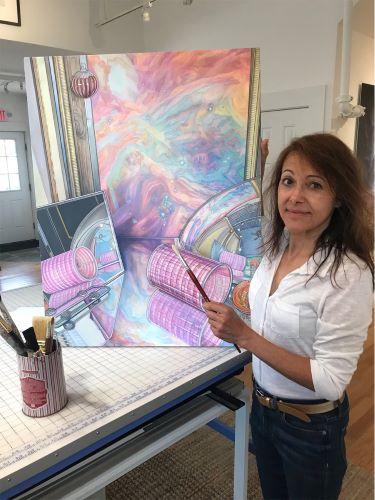
Artist Karen Bognar Khan with “Arriving at Orion” acrylic, 28” x 36”
During the fall of 2019, I began adding interpretations of Hubble telescope photographs as backdrops to help the viewer and myself see the still life objects more clearly as pure form. This “space” in my compositions has allowed me a much wider stage.


Speak Your Mind